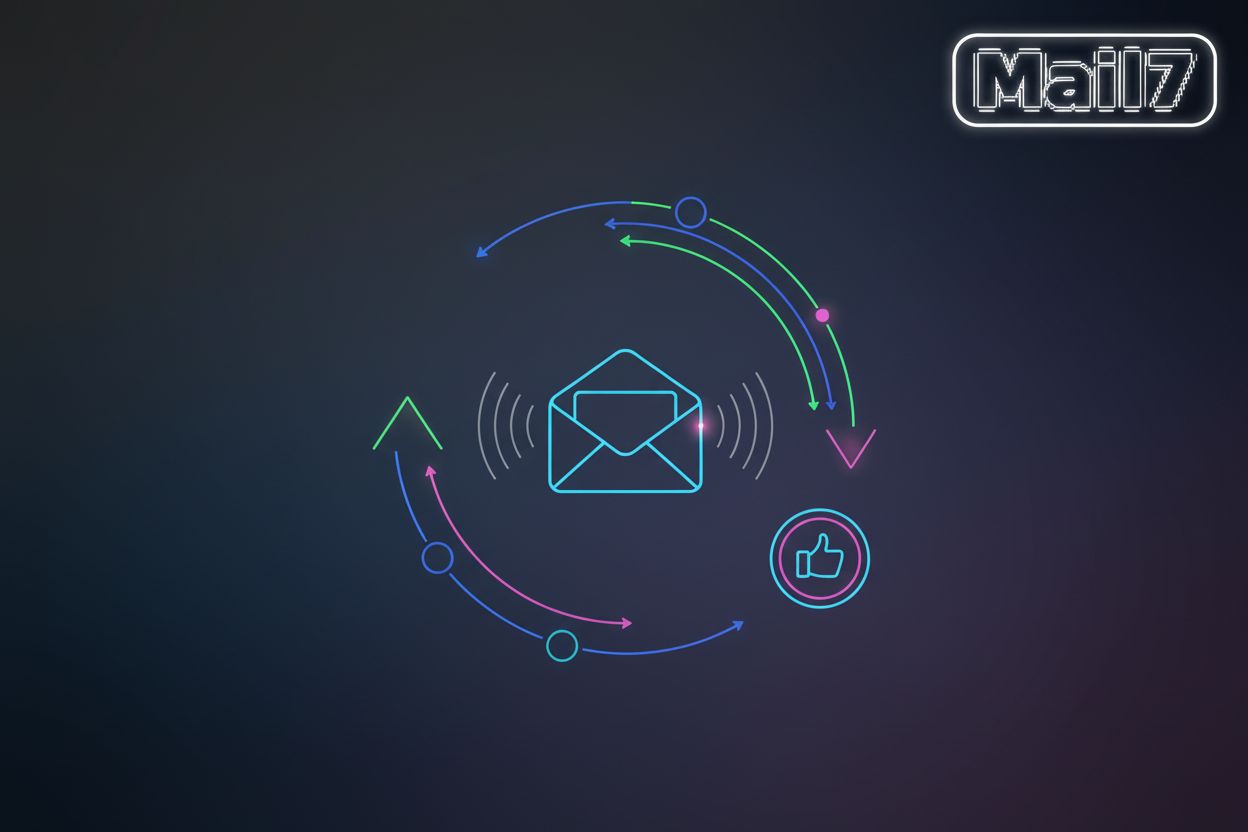Integrating Disposable Email Service APIs for Robust Email Testing
Introduction to Disposable Email Services
Need to test email functionality without risking your primary inbox? Disposable email services offer a practical solution.
Disposable email services provide temporary, anonymous email addresses. These addresses forward messages to your real email or offer an inbox for viewing directly. They help you avoid spam and protect your privacy during testing, sign-ups, or other situations where you don't want to reveal your main email.
Here are a few key points to consider:
- Privacy Protection: Keep your primary email address private and avoid unwanted marketing.
- Testing and QA: Use disposable emails for software testing and quality assurance, ensuring your applications handle email interactions correctly.
- Signup Verification: Bypass signup verification processes without committing your real email. For example, in e-commerce, you can test user registration flows.
- Spam Prevention: Avoid spam when signing up for services you're unsure about. This is useful in market research to explore new tools without long-term commitment.
- Account Isolation: Create multiple accounts on a single platform for testing different user roles or scenarios. This is helpful in financial services for testing various account permissions.
Imagine you are developing a new feature for a healthcare platform that requires email verification. Instead of using real patient data, which raises ethical concerns, you can use a disposable email to simulate the verification process.
mermaid
sequenceDiagram
participant Client
participant API
Client->>API: POST /emails
API->>API: Generates new email
API-->>Client: Returns email ID
Client->>API: GET /emails/{id}
API->>API: Retrieves email data
API-->>Client: Returns email content
How is data structured when interacting with these APIs?
- Most modern disposable email service APIs use JSON (JavaScript Object Notation) for request and response bodies.
- Some older or more specialized systems may still use XML (Extensible Markup Language).
- Understanding the API schema is crucial for correctly parsing the data you receive, regardless of the format.
Grasping these fundamentals sets the stage for diving into practical integration strategies, which will be covered next.
Integrating Mail7 API for Email Testing
Mail7 API offers a straightforward solution for developers seeking reliable email testing. Did you know that automated email tests can reduce integration errors by up to 30%?
Mail7 excels as an email testing solution, providing developers with tools to create disposable email addresses and access real-time emails. This facilitates a streamlined and automated email testing workflow.
- Disposable Email Addresses: Generate temporary email addresses for testing without risking your primary inbox. For example, a retail company can use Mail7 to test signup processes.
- Real-Time Access: Access emails in real-time via the API, ensuring timely verification of email content. A financial service can verify two-factor authentication codes promptly.
- Developer-Friendly API: Benefit from a REST API with comprehensive documentation for easy integration. This allows developers to quickly implement Mail7 into their existing testing frameworks.
To begin using the Mail7 API, authentication is crucial. Here's how you can set it up:
- Obtain an API key: Register on the Mail7 platform to receive your unique API key.
- Include the API key in request headers: Use the
Authorization: Bearer YOUR_API_KEY header in your HTTP requests.
Authorization: Bearer YOUR_API_KEY
- Securely store your API key: Protect your API key by storing it securely and managing access to prevent unauthorized use.
Generating disposable email addresses is a core function of Mail7. You can use the POST /emails endpoint to create new addresses.
curl -X POST
https://mail7.io/api/emails
-H 'Authorization: Bearer YOUR_API_KEY'
-H 'Content-Type: application/json'
-d '{}'
The API response will be a JSON object containing the newly created email address. Parsing this response allows you to extract the email address for use in your tests.
{
"email": "[email protected]",
"id": "unique-identifier"
}
</code></pre>
<p>Integrating Mail7 API streamlines email testing, ensuring robust and reliable email functionality in your applications. Next, we'll explore the integration process for another popular service, Temp Mail.</p>
<h2>Implementing Email Verification with the API</h2><p>To verify the email verification process, you'll need to ensure that the tokens generated by your application are correctly sent and validated. Let's explore how to implement this using disposable email service APIs.</p>
<p>First, you must generate a <strong>unique token</strong> within your application. This token acts as a secure identifier for the email verification process.</p>
<ul>
<li><p>Generate a random string using a secure method. For example, in Python, you can use the <code>secrets</code> module:</p>
<pre><code class="language-python">import secrets
token = secrets.token_urlsafe(32)
</code></pre>
</li>
<li><p>Associate this token with the created <strong>disposable email address</strong> in your database. Include a timestamp to track expiration, ensuring tokens are valid for a limited time.</p>
</li>
</ul>
<p>Next, construct the verification email and send it to the disposable email address.</p>
<ul>
<li>Construct the verification email with a link containing the generated token. Make sure the link points to a verification endpoint in your application. For example: <code>https://yourapp.com/verify?token=UNIQUE_TOKEN</code>.</li>
<li>Use your <strong>SMTP (Simple Mail Transfer Protocol) service</strong> to send the email to the disposable address. Ensure the email is formatted correctly to avoid deliverability issues.</li>
<li>Check your SMTP logs to confirm that the email was successfully sent.</li>
</ul>
<p>Finally, retrieve the email from the disposable email service and validate the token.</p>
<ul>
<li>Use the <code>GET /emails/{id}</code> endpoint, mentioned in a previous section, to retrieve the email content from the disposable email service. Parse the email body to extract the verification token.</li>
<li>Validate the extracted token against the generated token stored in your database.</li>
<li>If the tokens match and the timestamp is within the valid timeframe, mark the email address as verified in your application.</li>
</ul>
<p>By implementing these steps, you can ensure a robust and automated email verification process using disposable email service APIs. Next up, we'll examine how to handle bounces and delivery failures using these APIs.</p>
<h2>Advanced Testing Scenarios</h2><p>Are you prepared to handle the chaos of bounced emails and delivery failures in your email testing? Let's explore some advanced testing scenarios to ensure your system can gracefully recover from these common issues.</p>
<p>When sending emails through a disposable email service API, it's crucial to monitor the API responses. These responses often include status codes indicating the success or failure of delivery.</p>
<ul>
<li>Look for <strong>specific error codes</strong> that point to delivery problems, such as:<ul>
<li><code>550</code>: Mailbox unavailable</li>
<li><code>554</code>: Transaction failed</li>
</ul>
</li>
<li>By tracking these codes, you can identify undeliverable addresses and prevent future attempts to send emails to them.</li>
</ul>
<p>Email delivery isn't always instantaneous, and temporary network issues can cause failures. Implementing a <strong>retry mechanism</strong> allows your application to automatically re-attempt sending emails that initially failed.</p>
<ul>
<li>Use an <strong>exponential backoff strategy</strong>:<ul>
<li>Wait a short period (e.g., 5 seconds) before the first retry.</li>
<li>Double the wait time for each subsequent attempt (e.g., 10 seconds, 20 seconds).</li>
<li>Set a maximum number of retries to prevent indefinite looping.</li>
</ul>
</li>
<li>This approach helps manage temporary failures without overloading the system.</li>
</ul>
<p>Comprehensive <strong>logging of failed deliveries</strong> is essential for analyzing patterns and identifying recurring issues.</p>
<ul>
<li>Include the following information in your logs:<ul>
<li>Timestamp</li>
<li>Recipient email address</li>
<li>SMTP status code</li>
<li>Error message from the API</li>
<li>Number of retry attempts</li>
</ul>
</li>
<li>This data enables you to pinpoint problems with specific email addresses, domains, or even the disposable email service itself.</li>
</ul>
<p>Here's a snippet of code demonstrating a simple retry mechanism in Python:</p>
<pre><code class="language-python"> import time
def send_email_with_retry(email_address, content, max_retries=3):
attempts = 0
while attempts < max_retries:
try:
# Send email logic goes here
print(f"Attempting to send email to {email_address}, attempt {attempts + 1}")
# Simulate success after a few retries
if attempts > 0:
print("Email sent successfully!")
return True
except Exception as e:
print(f"Email failed: {e}")
attempts += 1
time.sleep(2 ** attempts) # Exponential backoff
print("Max retries reached. Email delivery failed.")
return False
</code></pre>
<p>Effectively handling bounced emails and delivery failures ensures that your email functionality remains robust and reliable. Next, we'll examine how to test email formatting and content using disposable email service APIs.</p>
<h2>Security Considerations</h2><p>Did you know that neglecting security during email testing can expose sensitive data? Integrating disposable email service APIs introduces security considerations that developers must address.</p>
<p>One of the primary concerns is <strong>API key management</strong>. Improper handling of API keys can lead to unauthorized access and potential abuse of the service.</p>
<ul>
<li>Never commit API keys to <strong>version control systems</strong>, like Git. This makes them publicly accessible.</li>
<li>Instead, use <strong>environment variables</strong> or secrets management tools to store API keys securely. This prevents them from being exposed in the codebase.</li>
<li>Implement proper access control and auditing to track who uses the API keys and when. This helps detect and prevent unauthorized use.</li>
</ul>
<p>Another critical aspect is <strong>data sanitization and validation</strong>. Failing to sanitize input data can lead to injection attacks, while neglecting to validate email content can expose systems to malicious code.</p>
<ul>
<li>Sanitize all input data to prevent <strong>injection attacks</strong>. This includes any data you send to the API to create or retrieve emails.</li>
<li>Validate email content to avoid malicious code. Ensure that the email content you receive from the API does not contain any harmful scripts.</li>
<li>Securely handle sensitive data in test environments. Avoid using real or production data during testing.</li>
</ul>
<p>Finally, it's crucial to consider <strong>rate limiting and abuse prevention</strong>. Disposable email service APIs are vulnerable to abuse if not properly protected.</p>
<ul>
<li>Understand and respect API rate limits. Exceeding rate limits can lead to temporary or permanent blocking of your access.</li>
<li>Implement throttling mechanisms in your testing scripts to avoid overwhelming the API. This ensures fair usage and prevents service disruptions.</li>
<li>Monitor API usage for suspicious activity. Look for unusual patterns or excessive requests that may indicate abuse.</li>
</ul>
<p>By addressing these security considerations, you can safely and effectively integrate disposable email service APIs into your email testing workflows. The next section will provide a summary of the key points discussed in this article.</p>
<h2>Conclusion</h2><p>Integrating disposable email service APIs offers a powerful approach to refining your email testing strategy. As we've explored, these APIs provide a wealth of functionalities, from generating temporary email addresses to verifying email content.</p>
<p>Disposable email service APIs offer several advantages for developers:</p>
<ul>
<li><strong>Streamlined email testing workflow.</strong> You can automate the creation and management of temporary email accounts, reducing manual effort and speeding up your testing processes. For instance, a <strong>QA (Quality Assurance) engineer</strong> can quickly generate multiple email addresses to test user registration flows.</li>
<li><strong>Improved test automation capabilities.</strong> APIs allow you to programmatically access and verify email content, enabling you to create more comprehensive and reliable test suites. A <strong>software developer</strong> can use this to automatically check if verification links are correctly formatted.</li>
<li><strong>Enhanced email security and privacy.</strong> By using disposable email addresses, you avoid exposing your real email address to potential security risks and spam. This ensures that your development and testing processes don't compromise sensitive data.</li>
</ul>
<p>The landscape of email testing is constantly evolving, and several exciting trends are on the horizon:</p>
<ul>
<li><strong>AI-powered email analysis.</strong> Expect to see more sophisticated tools that use artificial intelligence to analyze email content, format, and deliverability, identifying potential issues before they impact users.</li>
<li><strong>Advanced spam filtering simulation.</strong> Future testing platforms will likely offer more realistic simulations of spam filters, allowing developers to optimize their emails for deliverability and avoid common pitfalls.</li>
<li><strong>Integration with CI/CD pipelines.</strong> As development cycles become more automated, disposable email service APIs will integrate more seamlessly into <strong>CI/CD (Continuous Integration/Continuous Delivery) pipelines</strong>, enabling continuous email testing as part of the software development lifecycle.</li>
</ul>
<p>Incorporating these APIs into your workflow can significantly enhance the robustness and reliability of your email functionality. By embracing these tools, developers can deliver more secure and user-friendly applications.</p>





